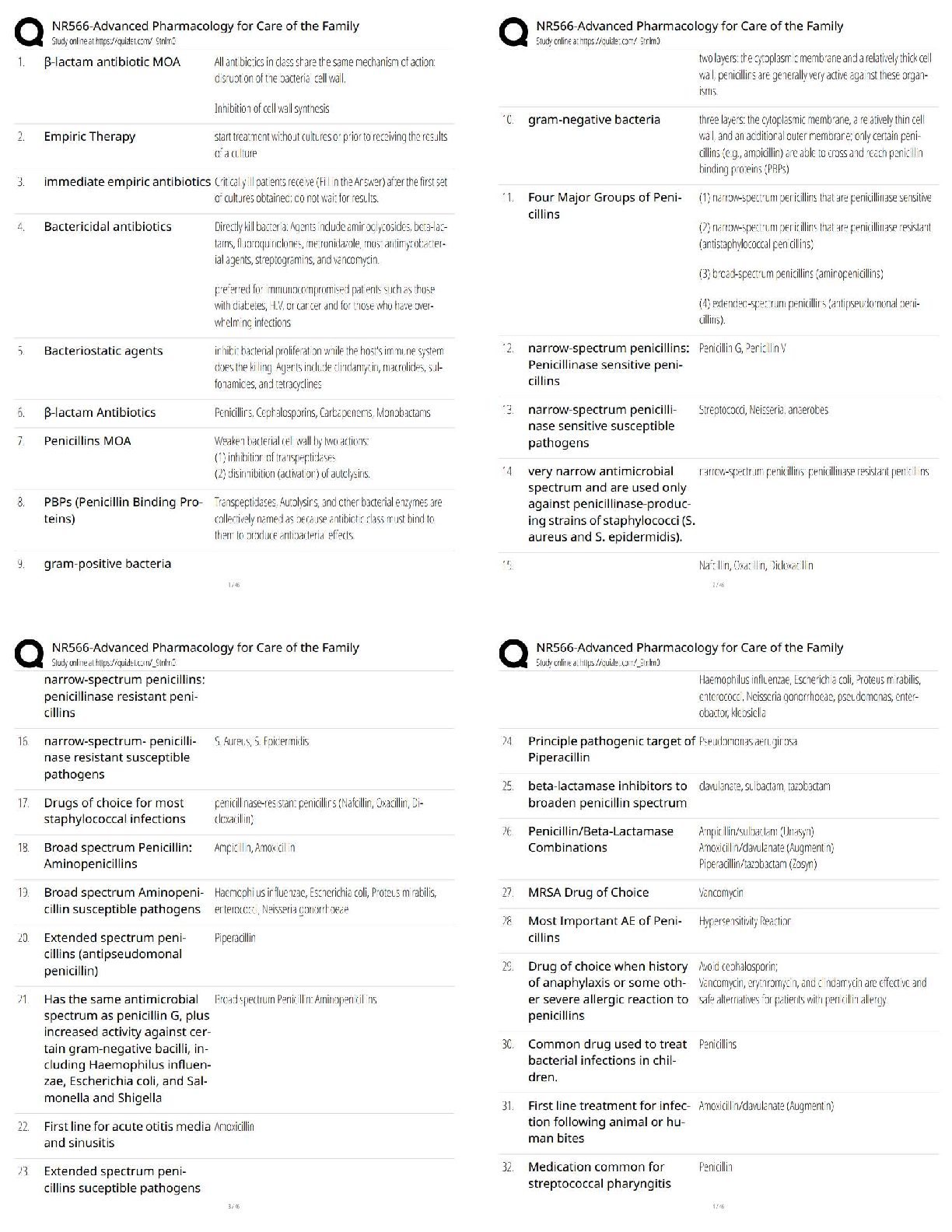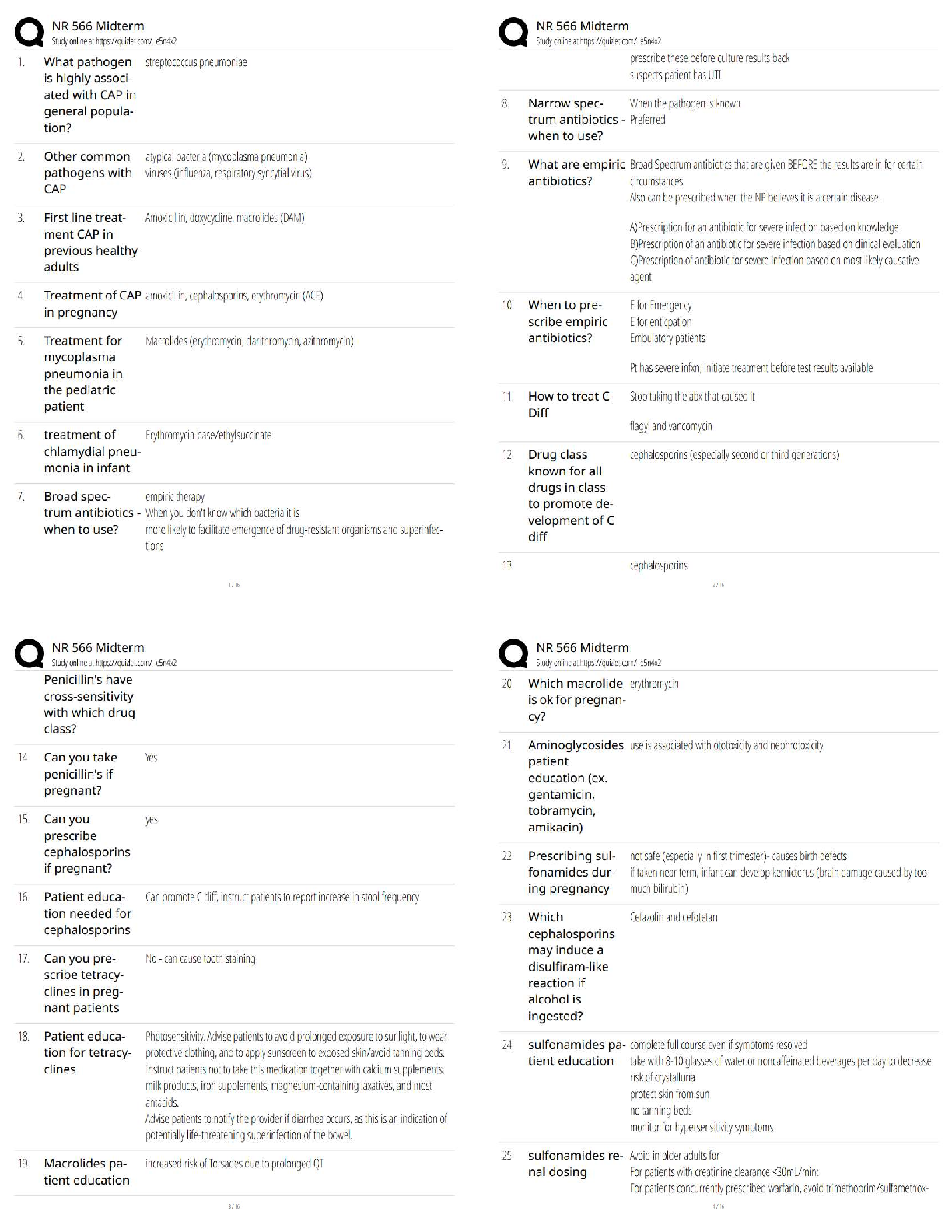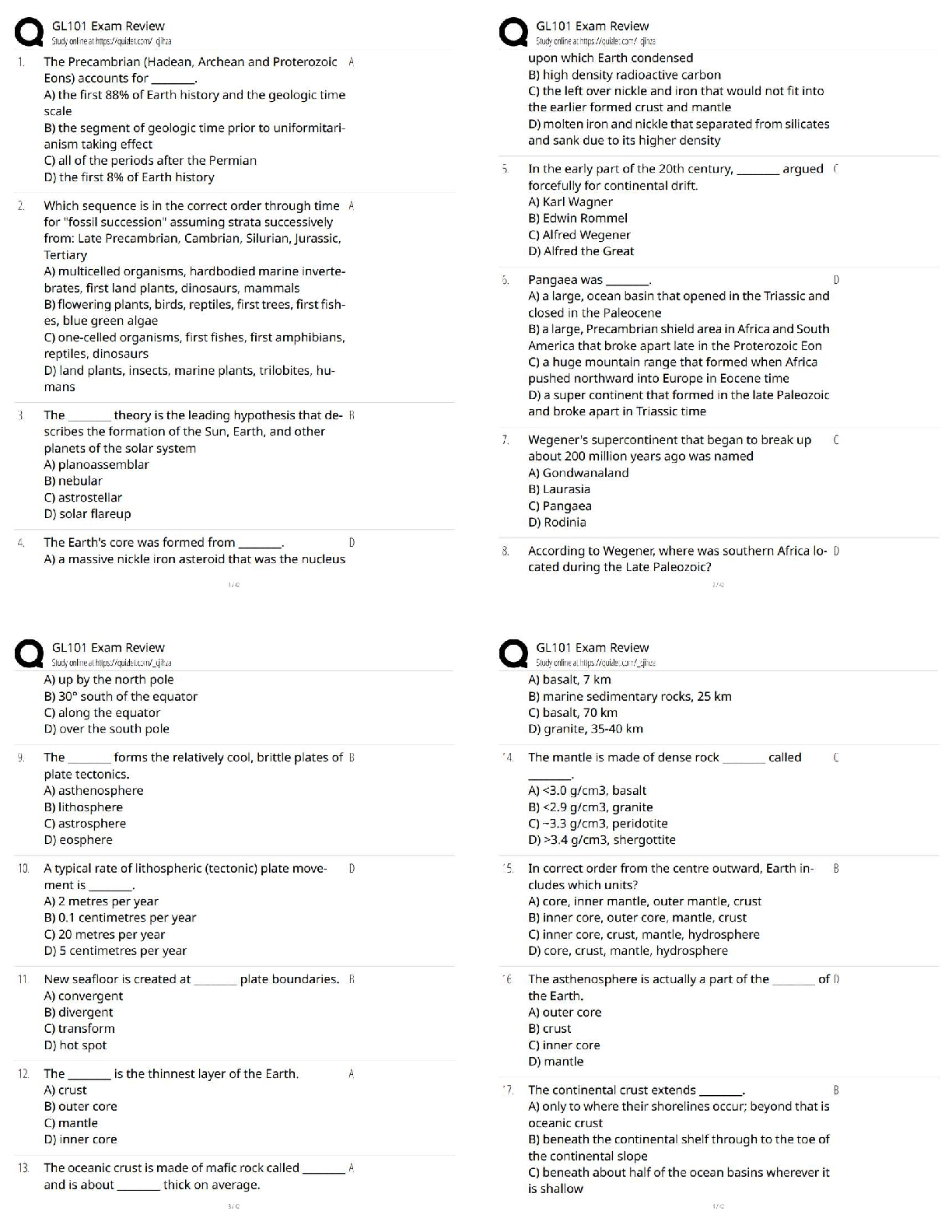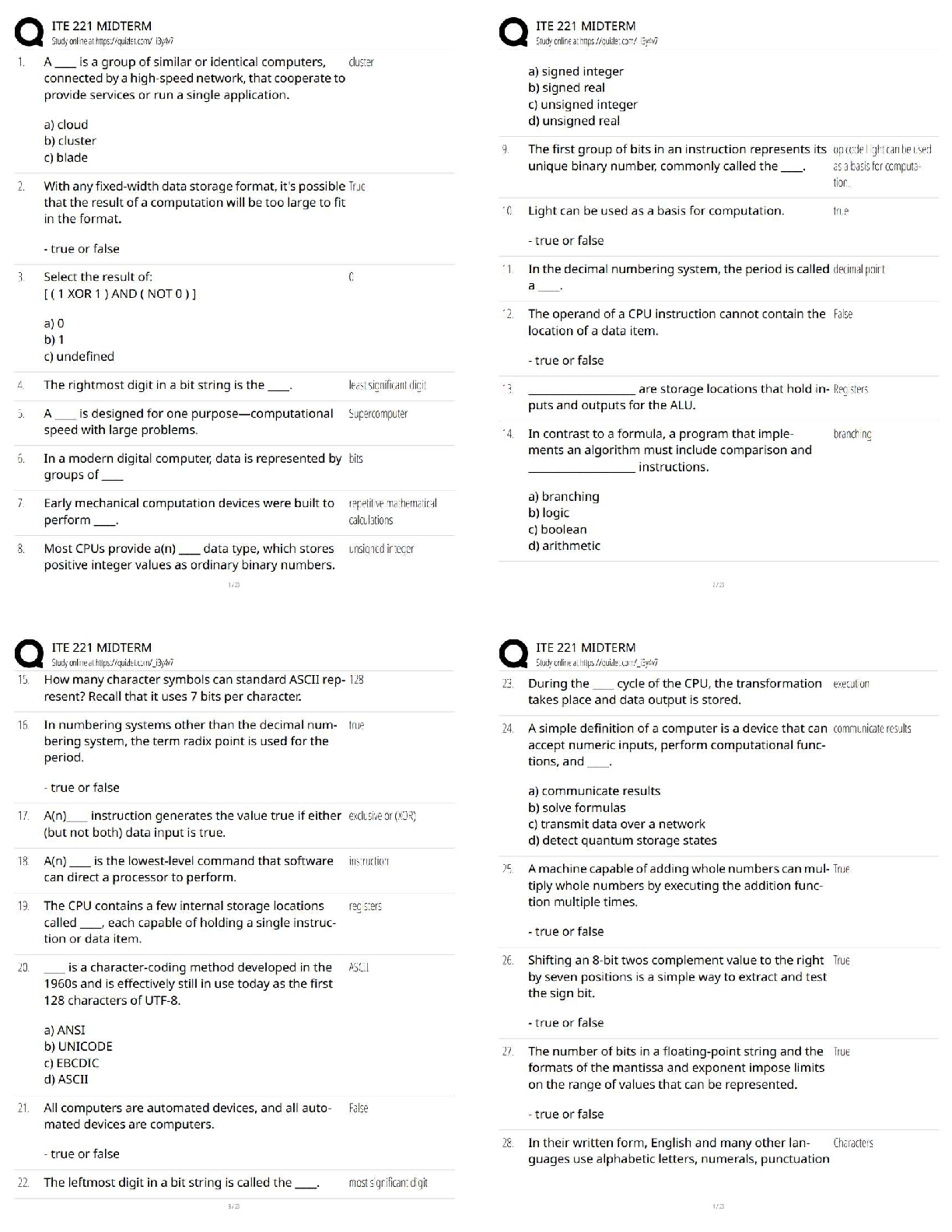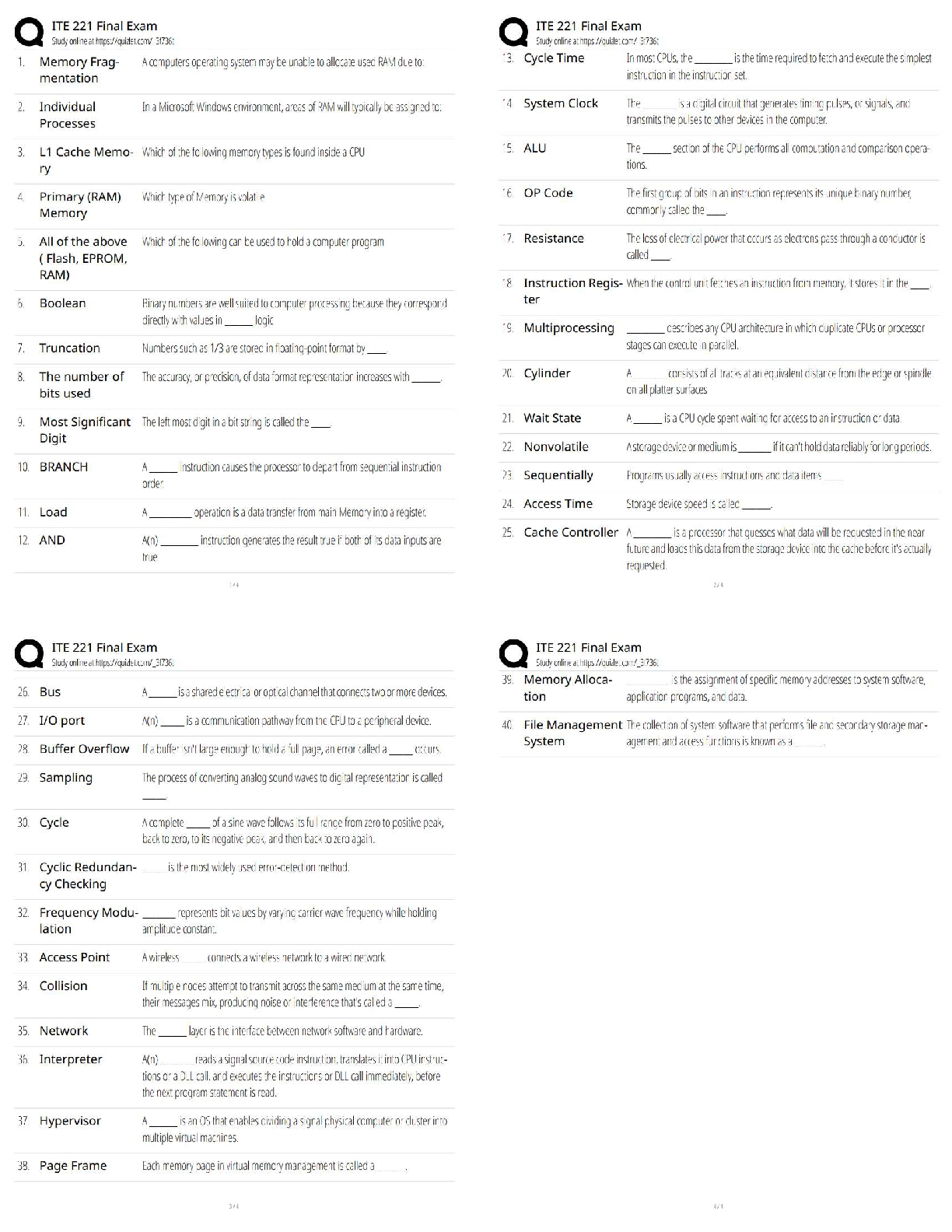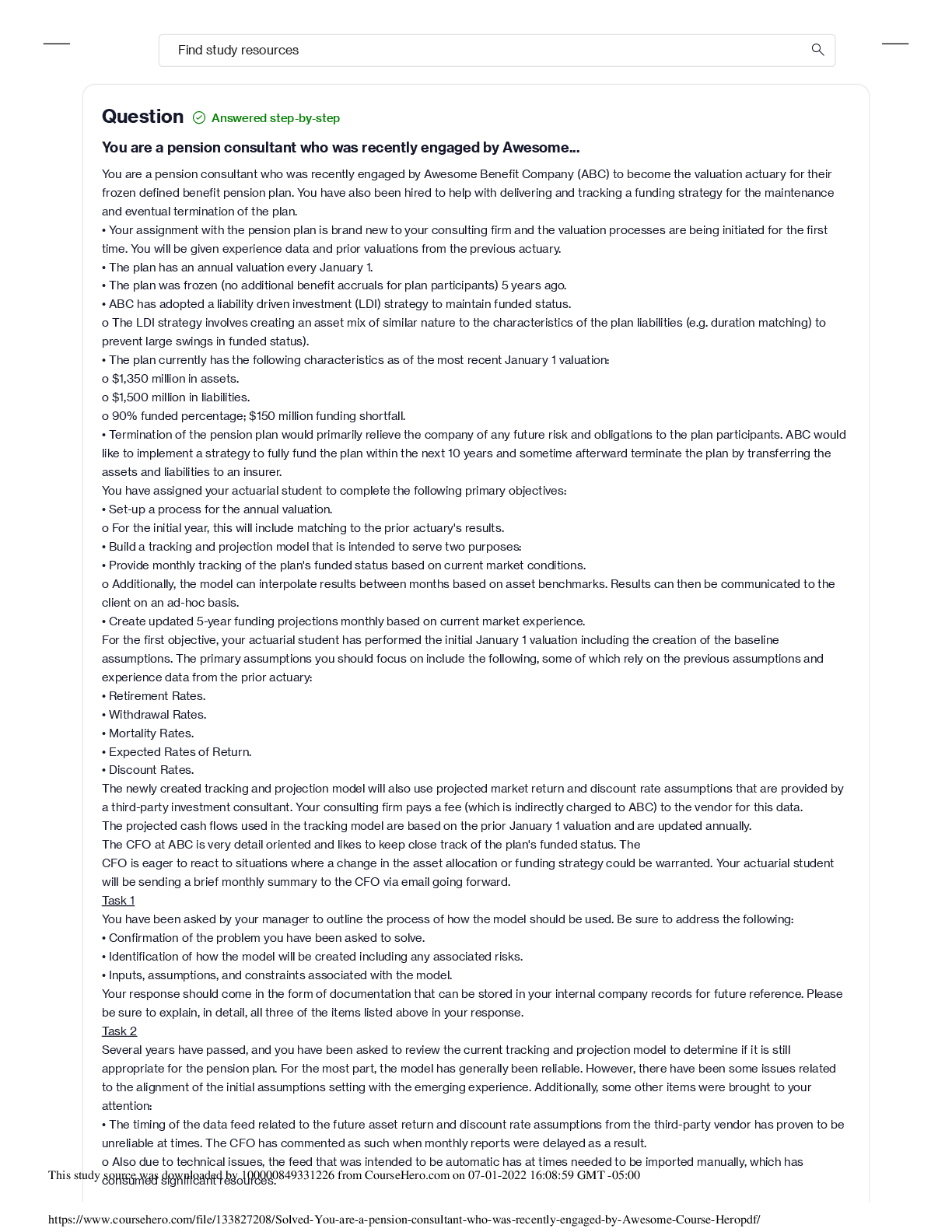*NURSING > QUESTIONS & ANSWERS > NR 509 Week 4 Midweek Comprehension Quiz (LATEST VERSION) With Complete Answers Grade A (All)
NR 509 Week 4 Midweek Comprehension Quiz (LATEST VERSION) With Complete Answers Grade A
Document Content and Description Below
Quix 4 According to the lesson, low-pitched sounds of S3 and S4 and the murmur of mitral stenosis are best heard using what? The naked ear The diaphragm of the stethoscope The bell of the steth ... oscope The bell and diaphragm are equally effective for this task Listen throughout the precordium with the diaphragm, pressing it firmly against the chest. The bell is more sensitive to the low-pitched sounds of S3 and S4 and the murmur of mitral stenosis. Apply the bell lightly, with just enough pressure to produce an air seal with its full rim. Use the bell at the apex, then move medially along the lower sternal border. Resting the heel of your hand on the chest like a fulcrum may help you to maintain light pressure. According to the lesson, heart failure can be assessed using the Framingham criteria. Which of the following findings are major criteria suggestive of heart failure? (Select all that apply) Ankle edema Orthopnea Neck-vein distention S3 gallop For establishing a diagnosis of CHF using the modified Framingham Criteria, 2 major criteria or 1 major and 2 minor criteria must be present. Major criteria are: Paroxysmal nocturnal dyspnea or orthopnea ; Neck-vein distention; Rales; Cardiomegaly; Acute pulmonary edema; S3 gallop; Increased venous pressure >16 cm of water; and Hepatojugular reflux. According to the Bates’ Visual Guide video 10.9 Auscultation of Heart Sounds, splitting of S2 is best heard during inspiration over which area on the chest wall? Apex Pulmonic Mitral Aortic A split S2 is best heard at the pulmonic valve listening post, as P2 is much softer than A2. Like the S1 heart sound, the S2 sound is described regarding splitting and intensity. According to the lesson, the border of the myocardium is generally located about 3 cm lateral to the left of the sternum? True False The border of the myocardium is generally located about 6 cm (not 3 cm) lateral to the left of the sternum. According to the lesson, the JVP is best assessed from pulsations in the right internal jugular vein, which is directly in line with the superior vena cava and right atrium? Correct Answer True False Estimating the JVP is one of the most important and frequently used skills of physical examination. The JVP closely parallels pressure in the right atrium, or central venous pressure, related primarily to volume in the venous system. The JVP is best assessed from pulsations in the right internal jugular vein, which is directly in line with the superior vena cava and right atrium. Quiz Score: 7.33 out of 10 Previous Next Submission Details: [Show More]
Last updated: 3 years ago
Preview 1 out of 2 pages

Buy this document to get the full access instantly
Instant Download Access after purchase
Buy NowInstant download
We Accept:

Reviews( 0 )
$10.00
Can't find what you want? Try our AI powered Search
Document information
Connected school, study & course
About the document
Uploaded On
Nov 23, 2021
Number of pages
2
Written in
All
Additional information
This document has been written for:
Uploaded
Nov 23, 2021
Downloads
0
Views
164


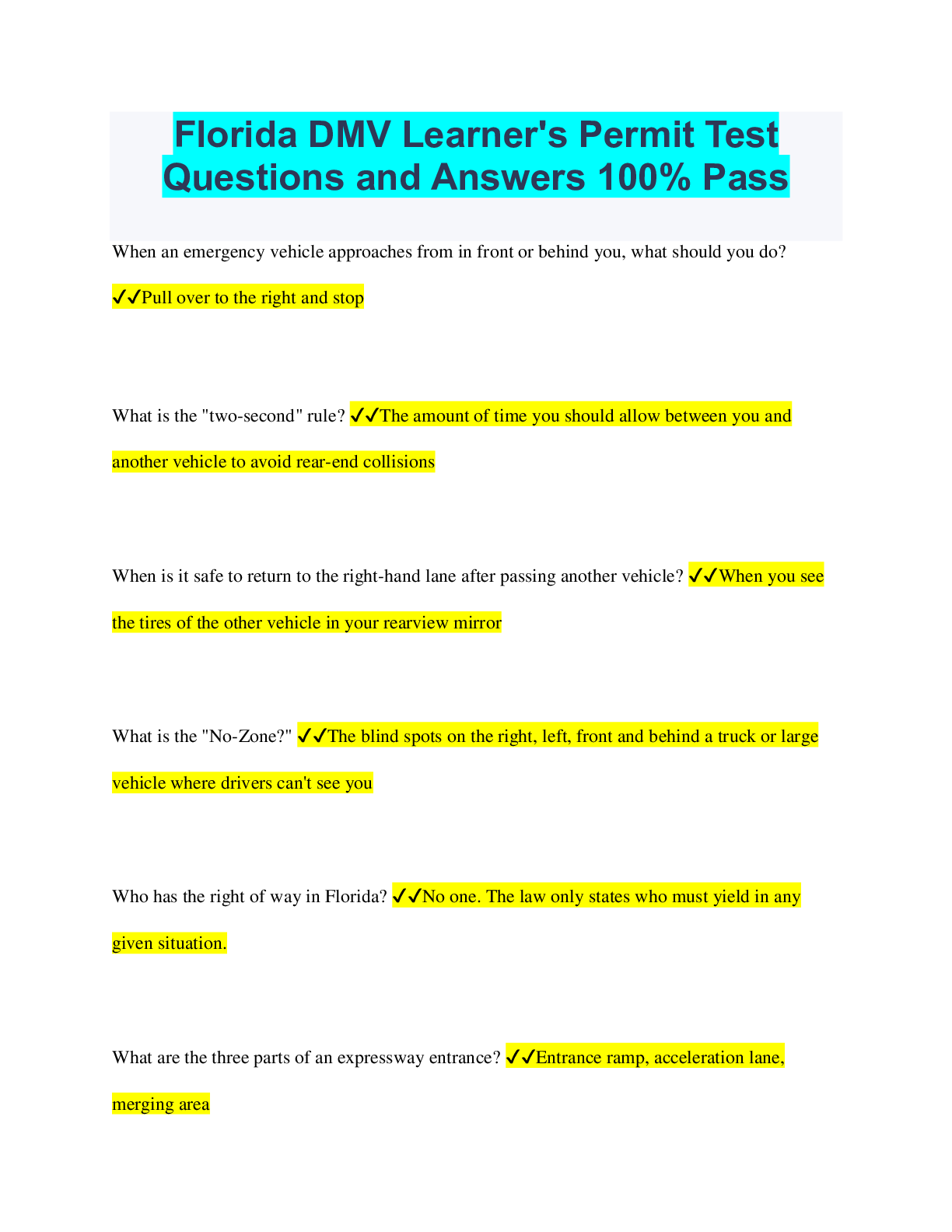
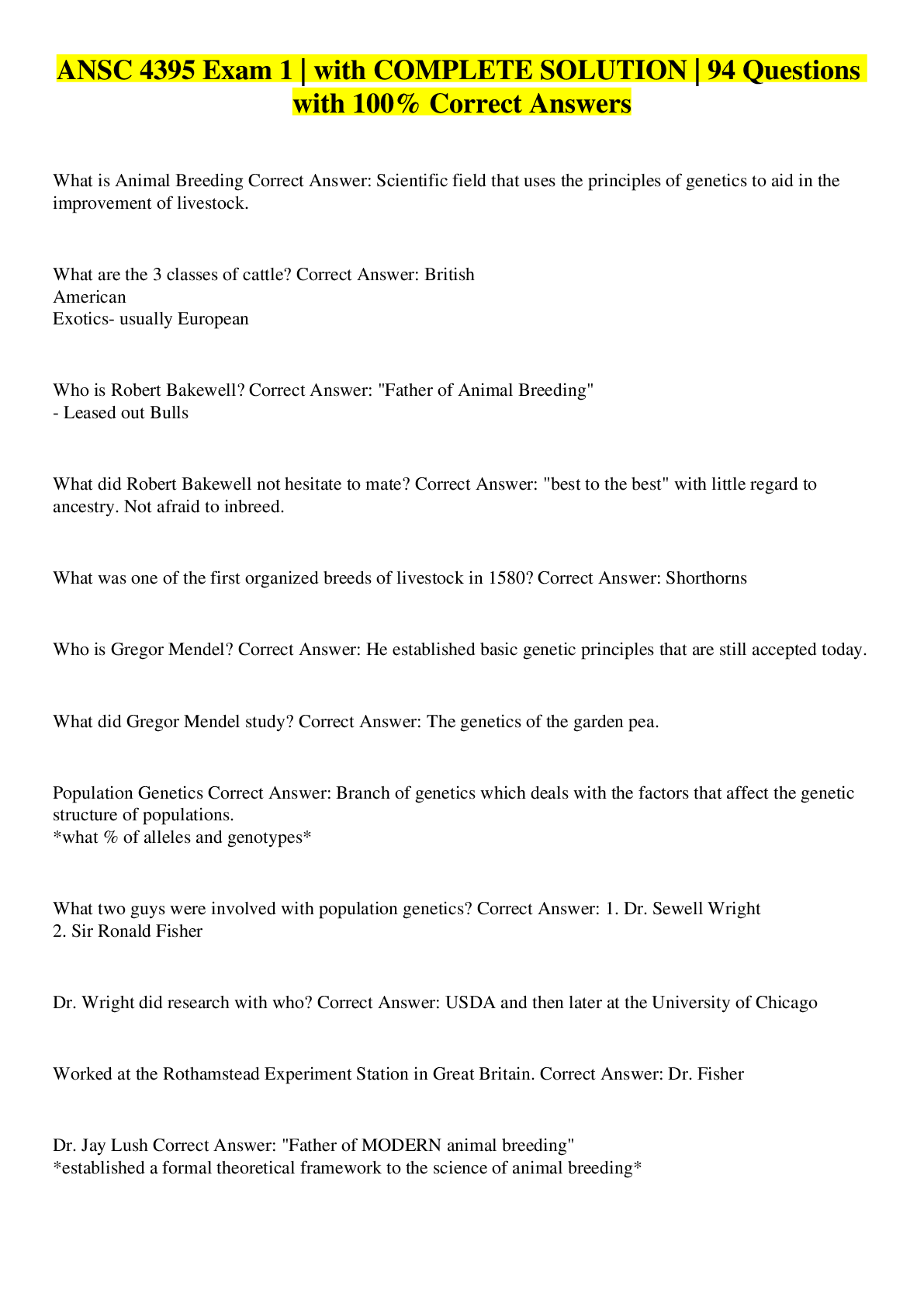

.png)







